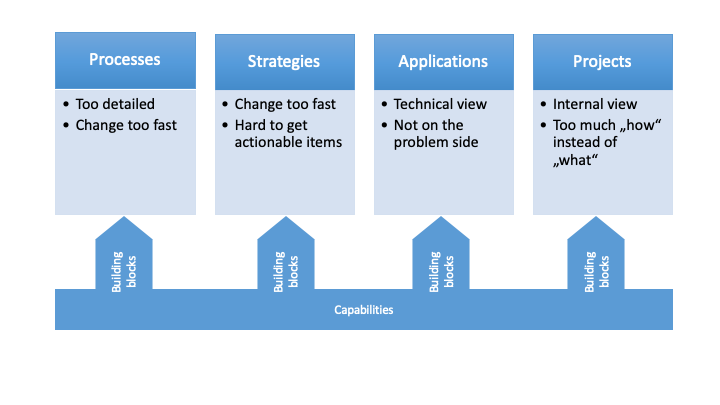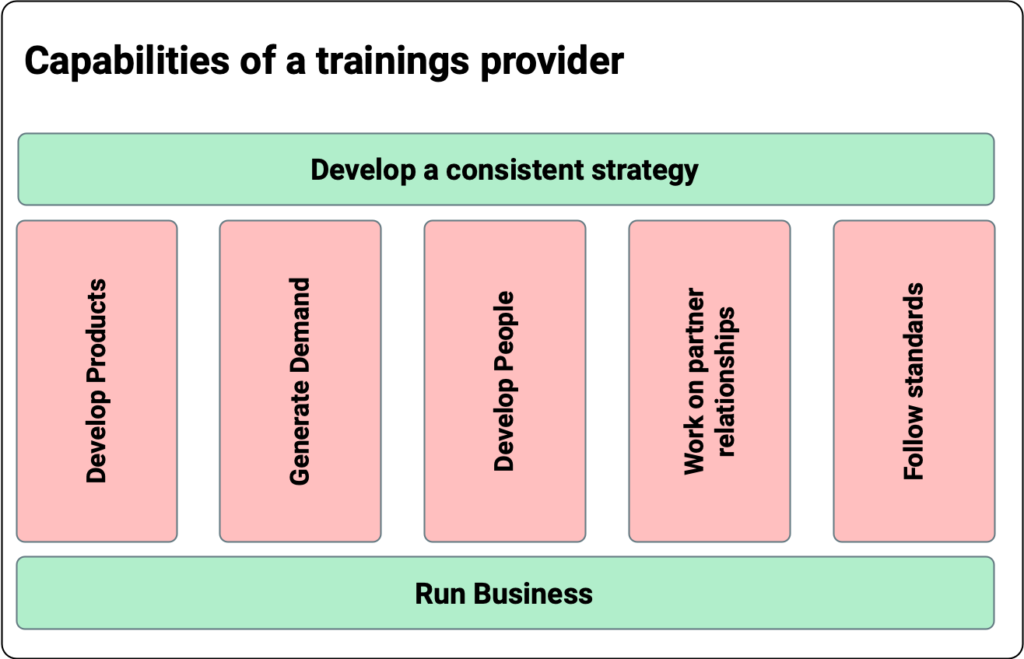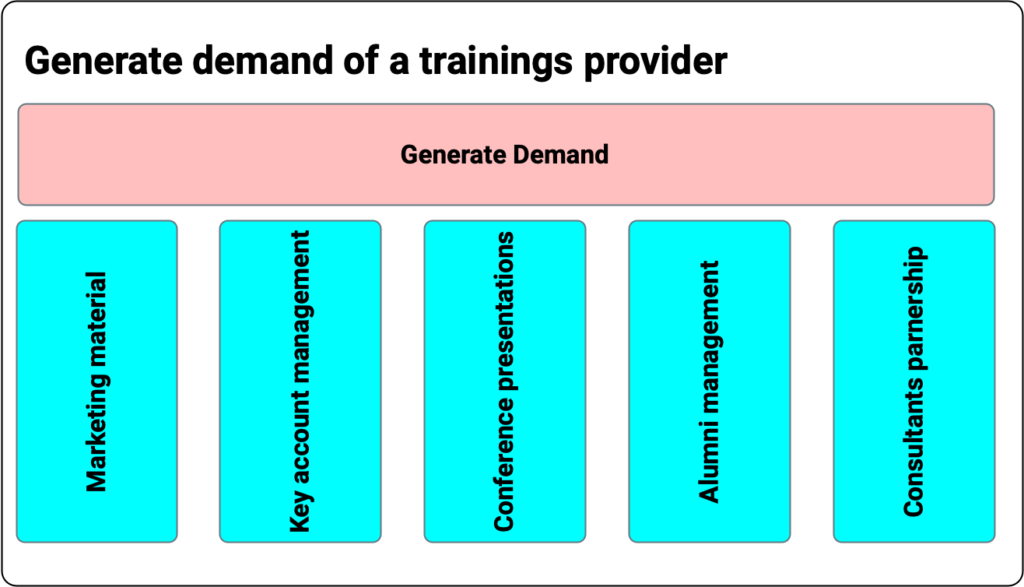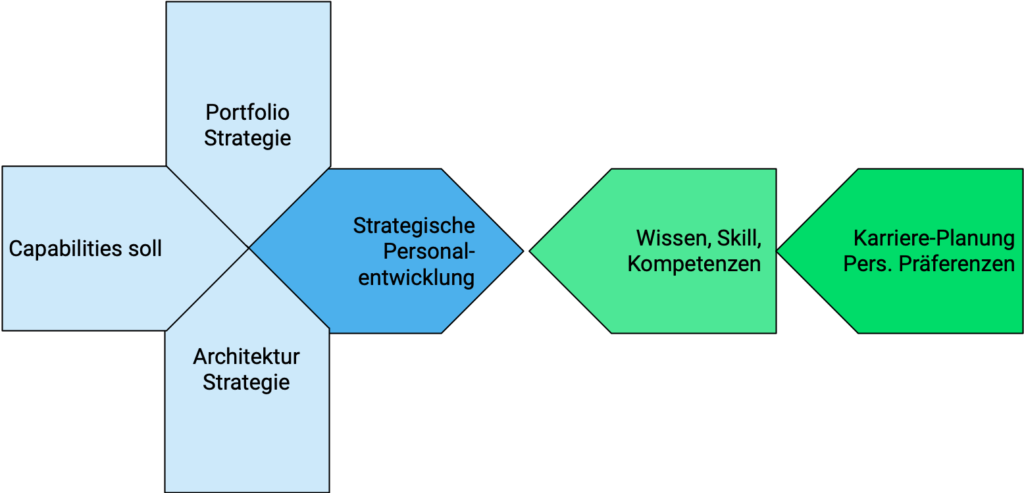What are organizational capabilities
A capability defines the ability of an organization to successfully perform a specific business activity. Skills:
- are the building blocks of the company represent stable business functions
- are unique and independent of each other are abstracted from the organizational model capture the interests of the company.

Why Capabilities
Organizational capabilities are used to develop a common vocabulary, e.g. between IT and the business units. Some other concepts are often used, but each has specific drawbacks:
- Processes are too detailed
- Strategies and projects are too variable
- Applications are functionally isolated and too technical. The business units cannot relate technology costs and business value.
Capabilities provide a sweet spot of stability and level of abstraction for a common vocabulary.
capability maps
Capabilities are often visualized by a capability map.
A capability map is a model of the enterprise that maps the business capabilities, processes, and functions required for business success to the IT resources that enable them.

This is what a capability map of a training company might look like.

Capability maps can be refined hierarchically. They should describe disjoint areas.
Here is an example of how marketing and sales might be structured for our training company described above.
Capabilities and organizational structure
It’s a good idea to structure teams around capabilities. This helps to achieve loose coupling and simplifies coordination along processes and value streams.
Develop capabilities

The required capabilities depend strongly on the portfolios. Strategic personnel planning develops from this.
- Teams should know the expectations of their capabilities
The deployment (e.g. as teams and their capabilities) depends again on the team structure and the skills of the individual employees.
This is contrasted with the personal preferences of the employees. Good planning relates these influencing factors.
